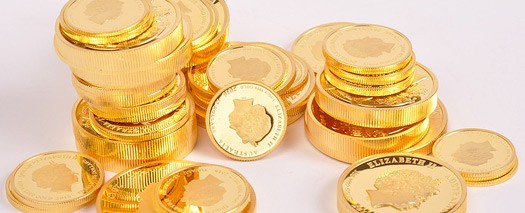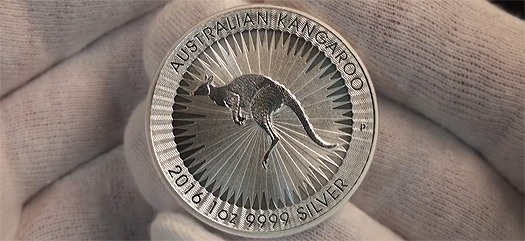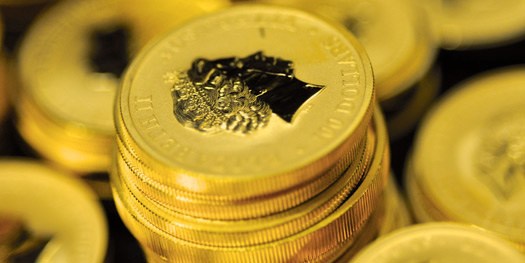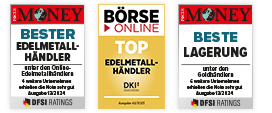The thirst for knowledge is great when it comes to coins made of precious metals, yet more and more people are considering whether an investment in silver is right for them.
Looking at the number of new investors currently taking their first steps into the market, one of the most frequently asked questions is that about the difference between bullion coins and "numismatic" coins.
This is a great question for all "gold throats" to ask themselves as they develop a passion for precious metals!
What is a numismatic coin?
A characterization of numismatic coins (also called collectible coins) helps to understand the differences in how bullion coins are made and marketed.
Numismatists do more than collect coins. They actively study currency, i.e., coins and paper money, as well as related items such as souvenirs and medals. They are particularly interested in historical, social, and artistic significance.
Rightly or wrongly, the term "numismatic" is used by many to describe modern commemorative coins with design themes for collectors that are not intended for circulation.
These numismatic editions, produced by many mints around the world with bullion coin programs, feature exceptional designs. Unlike coins in circulation, for example, they have a surface polished to a high gloss (i.e., polished plate) that looks like a mirror, as well as exceptional clarity and definition of the raised matte elements (relief).

Polished plates were originally proof coins struck by hand at the beginning of the minting process in order to detect and eliminate any defects. They then became special specimens that were retained as examples for each mintage. Today, they are considered numismatic coins and are of interest to collectors. Image source: Perth Mint
Modern numismatic coins prove the high art of minting through elaborate colorings, gilding and an artistic patina, among other things. Not only are they beautifully crafted, but they are also typified by a strictly limited mintage and feature a numbered certificate of authenticity and decorative packaging.
The motivation for buying such coins is often complex. For many, behind it is a strong desire to own something rare and inherently valuable with an aesthetically pleasing design that reflects personal interests.
What is a bullion coin?
In contrast, the interest in bullion co ins (also called bullion coins or bullion coins) is of a different nature - more specifically, the desire to do so with palladium is possible because they are valued based on the weight of the precious metal they contain.
The recently released 1-ounce silver coin Kangaroo is a classic example of a bullion coin. Like the majority of our numismatic coins, it is issued as legal tender - its guarantee is weight and purity. However, it is mass produced in unlimited numbers with a less elaborate finish and is sold without any special packaging or certificate. Other examples include the Krugerrand, which is celebrating its 50th anniversary in 2017 and will also be launched for the first time in its anniversary year as the Silver Krugerrand .
These factors are key to why they are so attractive to investors. This allows the coins to be sold at a low price premium or "premium" - a small buzzer above the price of the metal to cover manufacturing costs as well as wages for workers in design, production, quality control and so on.
The price of a single silver Kangaroo coin is therefore only a few dollars above the international spot market price for silver - the benchmark price per silver price to obtain.
(And by gradually lowering the premiums for buying these coins in bulk quantities of 25, 100, 250 or 500 coins, this investment opportunity in silver becomes even more affordable!)

With more than 10 million sold worldwide in less than 12 months, investors have taken a liking to the Australian 1-ounce silver coin Kangaroo as an bullion coin. Image source: Perth Mint
"Semi-numismatic" bullion coins
Someone researching the differences between modern numismatic coins and bullion coins will soon come across references to "semi-numismatic" coins - a potentially confusing third category!
The mint, The Perth Mint, is probably to blame for coining this term. in 1987, it released the gold coin Australian Nugget, which featured a far more elaborate finish than bullion coins available at the time. This essentially included highly polished relief elements on a matte plate - the exact reverse of how they appear on a polished plate.
Today, our gold coin Kangaroo, the silver coins Lunar, the silver coin Kookaburra and the silver coin Koala are known as bullion coins with their "reversed" surface. They are sold at the guide price plus premium and are highly sought after by investors. Due to the annual changes in design and the - in some cases - limited mintage, they are also popular with collectors.

Also known as "reverse minting," these high-quality bullion coins from The Perth Mint feature a matte finish on the plate, while the designed areas are polished to a high shine. Image source: Perth Mint
Thanks to the innovative combination of quality and value, these outstanding coins have delivered bonus returns to smart investors a few times. Like all precious metal coins, they have a redemption or melt value that matches the sports market. Thanks to strong collector demand for some of our semi-numismatic releases, the secondary market value has already exceeded the prevailing metal price in some cases.

Weitere Informationen und Ihre nächsten Schritte:
Aktueller Goldpreis
Aktueller Silberpreis
Gold-Silber-Ratio
Aktueller Platinpreis
Aktueller Palladiumpreis
Wöchentliche Marktanalysen kostenlos erhalten
Glossar zu Edelmetallen
Goldcharts für Ihre Webseite
Gold-Silber-Ratio-Charts für Ihre Webseite
- Silbercharts für Ihre Webseite
Preisliste
Edelmetall Preise
Silber Neuheiten
Feinsilber
Silber kaufen
1 kg Silbermünzen
1 Unze Silbermünzen
Silberunze
Tubesize
Silberankauf
Ankauf von Silberbarren
Ankauf von Silbermünzen
Maße & Gewicht: Silberbarren
Mehrwertsteuer bei Silber
Silberpreis
Das deutsche Stempelgesetz von 1884
Edelmetalle
Edelmetalle kaufen
Edelmetalle verkaufen
Gold, Silber lagern
Gold-Silber-Ratio
Privy Mark Münzen
Goldsparplan oder Silbersparplan
Goldverbot
Echtheit von Gold prüfen
Hausratversicherung für Gold
Tresor
Bankschließfach





